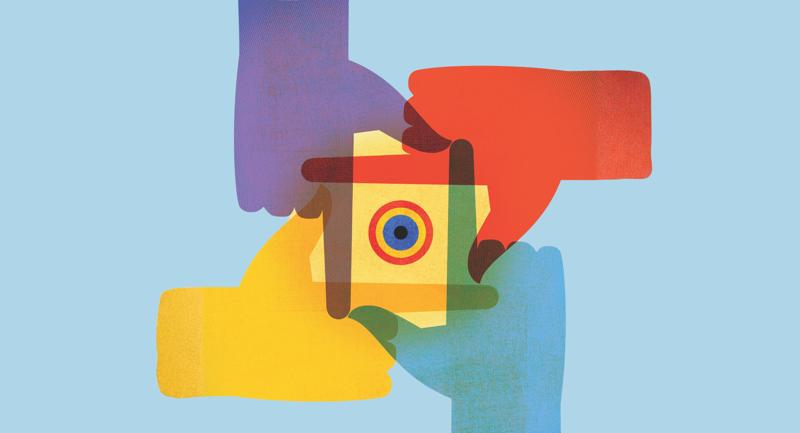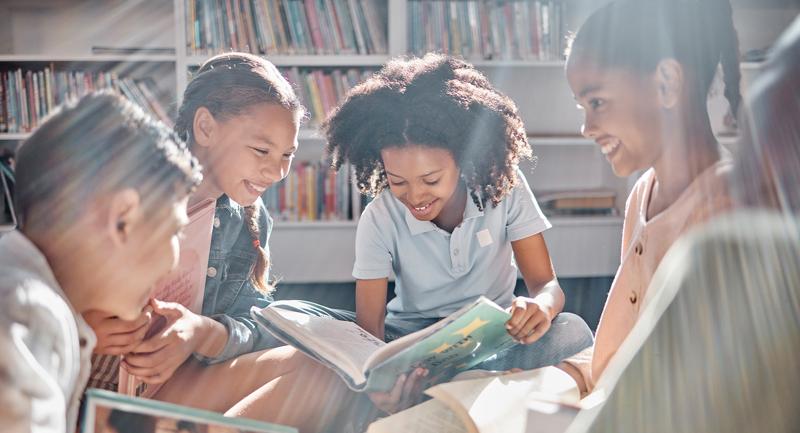How can you place learning goals front and center in a tech-rich classroom? Let the phrase "tasks before apps" be your reminder to focus on technology's purpose for learning, even when bright and shiny digital tools grab your attention.
As a teacher in a one-to-one iPad classroom, I strove to make the most of the tablets in my students' hands. From screencasting and moviemaking to reading activities and skill practice, these devices elevated and energized my students' learning experiences.
Digital platforms can give children access to learning experiences that meet their individual needs, such as when a student uses the free Microsoft Learning Tool Immersive Reader to hear a passage read aloud. Digital tools can open up the world to students, such as virtual-reality videos from the New York Times that showcase a place they may never have the chance to visit.
In my current role as a professional development facilitator, I spend time in other teachers' classrooms in schools across the country. The phrase "tasks before apps" was born out of my coaching conversations and presentations to educators. It is a reminder that, even as we consider how technology helps students do new and amazing things with their learning, we must always place learning goals at the forefront.
Here are four strategies to make the most of technology and embrace a "tasks before apps" mindset this school year.
To ensure that technology integration is meaningful this school year, step back and review your curriculum goals for the first quarter. With your curriculum goals in mind, how can you use technology to provide relevance to students, meet their individual needs, and do something that wouldn't have been possible five or 10 years ago? The use of a Chromebook, interactive whiteboard, or tablet isn't always the answer. But when you locate a moment in your unit when students can participate in a video conference with an expert, collaborate with a partner classroom on another continent, or build empathy as they watch a video of life in another corner of the world, powerful, integrated learning experiences can happen.
Nearpod has been a go-to tool since I first tried it with students as a 5th grade teacher. Through the use of this interactive presentation tool, my students were able to take a deep dive into the causes of the American Revolution while closely examining primary-source documents on their screens. Nearpod is free to use (with premium upgrades available) and lets instructors check for understanding, provide moments for collaborative discussions, and even embed virtual-reality experiences.
Earlier this year I used this tool with a group of 1st graders to discuss the life cycle of a frog. Although a read-aloud book might have helped students make connections and understand the topic, an interactive presentation took this experience to the next level. Students were able to draw pictures of frogs on their tablets, interact with a life cycle slideshow, and talk to their tablemates about their observations after viewing a 360-degree image of a pond. In this moment, Nearpod was the tool of choice to give students an opportunity to closely view media, apply their learning, and extend their thinking about the topic.
Content consumption is powerful, and with technology, it can be transformative. Applying critical thinking skills to viewing, reading, and listening are essential habits for students in the digital age. However, content consumption is often a default activity when technology is introduced into the classroom. As you shift your thinking toward "tasks before apps," identify moments for students to create products that showcase and celebrate their learning.
Your students might create a movie, website, e-book, podcast, or other shareable product to demonstrate understanding. An open-ended creation tool gives students the space to show what they know in a creative way and connect with an audience through the use of multimedia.
There are many powerful open-ended creation tools for the classroom that empower students to share their stories and demonstrate their mastery of content. Soundtrap is a collaborative tool that students can use to create podcasts and record music. Your students might interview veterans in your community as part of a narrative writing project and share their interviews as a podcast. Adobe Spark Video is a moviemaking tool that can capture student voice and help students combine a variety of media, including icons and images. Your students might chronicle the steps of a science experiment in a tutorial for a partner class. Book Creator is an e-book tool perfect for poetry anthologies, how-to guides, or anything you or your students can imagine. Both Soundtrap and Book Creator are free to use (with premium upgrades available), and Adobe Spark has made their premium features free for K–12 students.
Honoring student interest can help establish buy-in and communicate the relevance of the content goals you have identified for this school year. Digital tools, like surveys, make it easier to gauge student interest so that you can figure out what your students are excited about learning. Technology can also help you locate and curate classroom resources related to their interests.
A simple interest survey can help you decide in what direction to take a unit or how to group students together. Two of my favorite tools for conducting surveys are Google Forms, which lets teachers choose the type of questions they would like to post (e.g., a rating scale, check boxes, or open-ended questions), and Kahoot, which lets teachers project questions to which students must quickly respond while a clock counts down and music plays. Google Forms and Kahoot are both free to use.
A few weeks before kicking off a new unit, dedicate time within your lesson for a wondering activity to get your students' wheels spinning. For example, if you are planning to start a unit on nutrition with your 8th grade students, pose a series of questions to students such as "What is your favorite healthy snack?" and "Where do you go to figure out if a food is good for you?" Gathering this information will help you honor students' natural curiosity about a topic as you prepare tasks aligned to learning goals. A popular option for video responses is Flipgrid. With this tool, students can respond to a prompt in a video as opposed to answering a series of questions or writing a response. Flipgrid is free to use (with premium upgrades available).
Working in a school with supportive, enthusiastic colleagues can make a hard day in the classroom so much easier. This is especially true when you are trying out new ideas and want to brainstorm with a fellow teacher. You may already have a go-to person in your grade level or department to whom you turn for advice—someone you always ask to join in when you try out something new. This same person could become your partner in tech—someone you work with to set goals for purposeful technology integration.
If finding someone in your building or district is a struggle, there are a few virtual options you may want to consider. You can locate a Twitter chat on Participate by searching by topic or time. This is a great way to find like-minded educators who are passionate about the same subject and who can help you problem-solve while trying something new. In addition to Twitter, Instagram is a great place to find inspiration. I started using Instagram this year and love how easy it is to follow a hashtag to find educators with similar interests.
As you review your curriculum goals this year, reflect on creation opportunities, take stock of student interest, and find your partner in tech in order to ensure intentional tech integration that uses meaningful tasks to guide your curation of apps.







